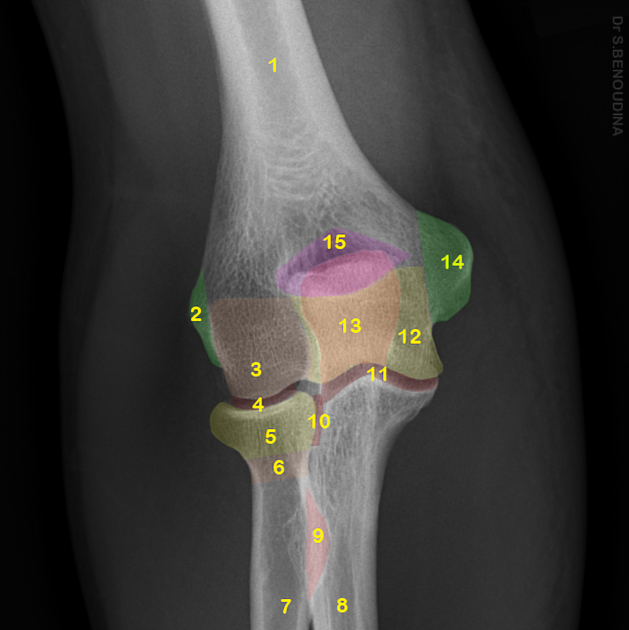Fill out form to enquire now
CECT Right Elbow Joint
An advanced imaging technique, CECT of the right elbow joint gives cross-sectional images to increase the visibility of the joint and adjacent structures using a contrast agent. This procedure is useful in diagnosing diverse conditions concerning the elbow, including fractures, ligament tears, tumors, and joint infections. In this procedure, to enhance the clarity of the images regarding blood vessels and tissues, a contrast dye is administered intravenously during scanning. It usually takes a few minutes and requires patients to be as silent as possible while taking very high-quality images. Clinical decisions for proper and effective treatment planning should be guided by the CECT of the right elbow joint for appropriate diagnostic information.
Indications for CECT of the Lower Chest
Several clinical scenarios are required to obtain a CECT of the right elbow joint to obtain detailed imaging of the joint and its surroundings. Such imaging helps assess fractures and ligament tears. It is also important in diagnosing infections, tumors, and joint effusions by evaluating the anatomy of the elbow. In addition, it helps in assessing the soft tissue abnormality and abnormality in bones around it and thus will be able to identify if any other pathology is present. It further helps in preoperative planning by providing high-resolution images for better diagnosis and effective treatment strategy for injuries to the elbow. CECT of the right elbow joint is important in making clinical decisions that improve the patient’s outcomes.
CECT Procedure for Right Elbow Joint
Precautions: Inform the radiology department if you have allergies to iodine. In some cases, you are required to fast for some hours before undergoing the scan.
2.IV Contrast Injection: There will be a vein injected into the catheter where intravenous material for contrasts to improve images from your scans will be inserted into an arm vein.
3.Positioning: You will lie on an examination table that slides into the CT scanner. Your arm will be positioned so that the right elbow joint is in the center of the scanner.
4.Scanning: The scanner will take several images of your right elbow joint. You may be asked to hold your breath for a few seconds during this procedure to ensure clear imaging.
5.Post-Procedure: After the scan, the IV will be removed and you will be able to go home and resume your usual activities. You will be encouraged to drink fluids to help eliminate the contrast dye from your body.
Benefits of CECT
Improved Tissue Discrimination: Contrast agents make the differentiation between normal and abnormal tissues easier and help in making a precise diagnosis of tumors, infections, etc.
2.Shorter Imaging Time: The scanning time is reduced to minutes, thus improving the comfort of the patient and helping to get a timely diagnosis.
3.Comprehensive Evaluation: All parts of the lower chest, such as the lungs, mediastinum, and chest wall, can be imaged with CECT so that most medical conditions can be understood entirely.
4.Providing Support for Decisions Regarding Treatment: Detailed images help healthcare providers make better decisions relating to diagnosis, choices of treatment, and follow-up treatments.
5.Minimal Patient Discomfort: The procedure is non-invasive and is very well tolerated. There is minimal discomfort during the scanning process.CECT has been highly useful in acute conditions, allowing for the early establishment of a diagnosis such as pulmonary embolism or trauma and enabling appropriate and prompt medical treatment.
Risks and Considerations
CECT has some risks and precautions that the patients need to be informed of radiation exposure. The doses here are usually low and safe for everyone. Another risk is allergy to iodine-based contrast media, although only in the mildest form such as simple itching to much more severe reactions in a few individuals. Thus, patients with renal diseases are also vulnerable to contrast-induced nephropathy, and therefore proper screening is very important. The patient should also discuss their medical history with the healthcare providers to ensure that they are safe during the procedure. In summary, though CECT is an important diagnostic tool, these risks are important to be known to make decisions in its use.
- Test Type: CECT Right Elbow Joint
- Preparation:
- Wear a loose-fitting cloth
- Fasting required
- Carry Your ID Proof
- Prescription is mandatory for patients with a doctor’s sign, stamp, with DMC/HMC number; as per PC-PNDT Act
- Reports Time: With in 3-4 hours
- Test Price: Rs.4000
What is a CECT of the right elbow joint?
CECT of the right elbow joint is an imaging procedure that uses contrast dye to produce detailed images of the elbow and its surrounding structures for diagnostic purposes.
Why would I need a CECT of the right elbow joint?
You may need a CECT of the right elbow joint to evaluate conditions such as fractures, ligament tears, infections, or tumors in the area.
How should I prepare for the scan?
You should inform your healthcare provider about any allergies, especially to iodine, and may be advised to fast for a few hours before the scan.
Are there any risks associated with the CECT scan?
Yes, risks include exposure to ionizing radiation and potential allergic reactions to the contrast dye.
How soon will I receive the results?
Results are typically available within a few days, depending on the facility and the complexity of the findings.
Why Choose Medintu for CECT Right Elbow Joint?
Are you looking for affordable CT scan centers? Medintu has partnered with top ISO and NABL-certified diagnostic labs to provide high-quality CT scans. A CT scan is essential for identifying medical conditions such as cancer, internal injuries, and other anomalies by using X-rays to produce detailed images of the targeted area. Medintu employs skilled technicians and medical experts who prioritize the well-being and safety of patients during the procedure. You can book a scan at a reasonable cost by filling out the form below or calling us now at 91009 07036.





